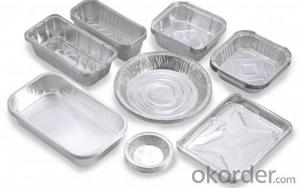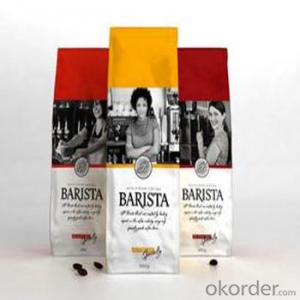Steam Aluminum Foil
Steam Aluminum Foil Related Searches
Led Light Bulbs For Ceiling Fixtures Led Lamps For Ceiling 42 In Ceiling Fan With Light Aluminum Coil Stock For Gutters Aluminum Foil For The Grill Hole Saw For Aluminum Plate Aluminum Tread Plate For Trailer Bow Plate For Aluminum Boat Aluminum Foil For Grow Room Aluminum Foil For Joint PainHot Searches
Stock Price For Aluminum Aluminum Coil Stock For Sale Aluminum Gutter Coil For Sale Used Aluminum Scaffolding For Sale 1/4 Aluminum Plate For Sale Aluminum Bar Stock For Sale Aluminum Round Stock For Sale Aluminum Diamond Plate For Sale Aluminum Scaffolding For Sale Craigslist 6061 Aluminum Plate For Sale Aluminum Dock Plate For Sale 7075 Aluminum Plate For Sale Aluminum Tread Plate For Sale Aluminum Checker Plate For Sale Aluminum Plate For Sale Near Me Plate Aluminum For Sale Aluminum Plate For Sale Aluminum Square Stock For Sale Aluminum Flat Stock For Sale Billet Aluminum Stock For SaleSteam Aluminum Foil Supplier & Manufacturer from China
Okorder.com is a professional Steam Aluminum Foil supplier & manufacturer, offers integrated one-stop services including real-time quoting and online cargo tracking. We are funded by CNBM Group, a Fortune 500 enterprise and the largest Steam Aluminum Foil firm in China.Hot Products
FAQ
- Aluminum sheets have the capability to undergo both welding and soldering processes, although the techniques for each differ significantly. When welding aluminum, a TIG (Tungsten Inert Gas) or MIG (Metal Inert Gas) welding process is typically employed, necessitating a high heat source and a filler material to connect the sheets. This process is generally more demanding when compared to welding steel due to aluminum's high thermal conductivity and lower melting point. On the other hand, soldering aluminum involves utilizing a low-temperature solder and flux to bond the sheets together. Usually, specialized solders like aluminum solder or solder with a high tin percentage are employed. Soldering aluminum is typically less prevalent and more intricate than soldering other metals due to the presence of an oxide layer on aluminum, which hinders proper adhesion. To summarize, while both welding and soldering can be utilized for joining aluminum sheets, welding is the more commonly employed method due to its superior strength and durability. Soldering aluminum presents additional challenges due to the requirement for specialized solders and the presence of the oxide layer.
- How much should I be charged to have aluminum siding installed? I have a two floor single family home which is detached. I also would want new gutters installed and soffets (i think that is what they are called). One company estimated 12k and another said 10K. This would entail just putting the siding over the original siding. Any answers are appreciated.
- You have no say in the matter. The insurance company is paying the contractor to remove and dispose of the old siding. They don't care if the contractor makes a few hundred bucks selling the siding as scrap and neither should you.
- There are several methods of surface preparation that can be used for aluminum sheets. These methods are designed to clean, treat, and prepare the surface of the aluminum to ensure optimal adhesion and paint durability. Here are some of the different methods of surface preparation for aluminum sheets: 1. Mechanical Abrasion: This method involves using abrasive materials such as sandpaper, wire brushes, or sandblasting to physically remove any dirt, rust, or oxidation from the surface of the aluminum. Mechanical abrasion creates a rough texture on the surface, which promotes paint adhesion. 2. Chemical Cleaning: Chemical cleaning involves using acidic or alkaline solutions to remove any contaminants or oxidation from the surface of the aluminum. This method is particularly effective for removing tough stains, oils, or greases. The surface is typically rinsed thoroughly after chemical cleaning to remove any residue. 3. Etching: Etching is a process that involves applying an acidic or alkaline solution to the aluminum surface to create a microscopically rough texture. This rough surface enhances paint adhesion and provides a better bonding surface for coatings. Etching is commonly used as a pre-treatment before applying a primer or paint. 4. Conversion Coating: Conversion coating is a surface treatment method that involves applying a chemical solution to the aluminum surface to create a thin, protective layer. This layer not only improves paint adhesion but also provides corrosion resistance. Common conversion coatings for aluminum include chromate conversion coatings and phosphoric acid anodizing. 5. Mechanical Cleaning: Mechanical cleaning involves using mechanical methods such as brushing, scraping, or buffing to remove loose particles, dirt, or debris from the surface of the aluminum. This method is often used as a preliminary step before applying other surface treatments or coatings. It is important to note that the choice of surface preparation method may vary depending on the specific requirements of the aluminum sheet's application, the condition of the surface, and the desired finish. Proper surface preparation is crucial to ensure the longevity and performance of the paint or coating applied to aluminum sheets.
- The yield strength of aluminum sheets can vary depending on various factors such as the alloy of aluminum, the tempering process, and the thickness of the sheets. Generally, aluminum sheets have a yield strength ranging from 10,000 psi (69 MPa) to 45,000 psi (310 MPa). However, it is important to note that these values are approximate and can vary based on the specific grade and temper of aluminum being considered.
- Yes, aluminum sheets are suitable for laser cutting. Aluminum is a commonly used material in laser cutting due to its excellent reflective properties, high thermal conductivity, and low melting point. These characteristics make it an ideal material to be cut by a laser beam. Laser cutting provides precise and clean cuts on aluminum sheets, allowing for intricate designs and complex shapes to be easily achieved. Additionally, laser cutting of aluminum sheets is a fast and efficient process, offering high productivity and cost-effectiveness.
- The only materials i can use is iodine, water, HCl, magnet, and pH paper. How do you identify aluminum with that?
- To start with, are you refering to aluminum as metal, an aluminum compound, or a solution with aluminum present as ions? If it is metaallic aluminum, it won't stick to a magnet, and it will react with HCl, however this isn't sufficient to definately say it is aluminum, it would be better to get a density, melting point, etc.














































